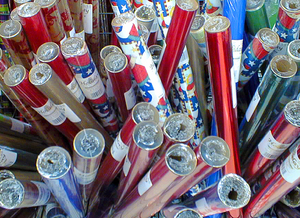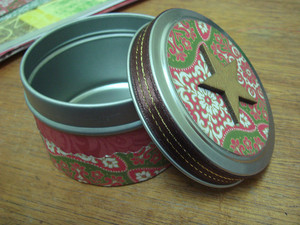What is a mote spoon?
In the days before electric teapots and conveniently packaged bags of tea, tea lovers steeped their beverage of choice in diminutive cups, using various utensils, usually silver or silver plated, to release the tea, strain the leaves, and leave the tea clear and pristine. These utensils were called “tea trappings”, and they helped to make tea a tidy, civilized experience in a time when tea was sold loose and came in tins, boxes or bags. During shipping, the tea was locked in chests to prevent damage or theft, since in its early days tea was so expensive only the very upper classes could afford it. Unlike the trim little bags that are prevalent today, this tea was in very raw condition, often containing dirt and dust from the journey, and sometimes even dead insects.
One of the specialized utensils adopted by early tea drinkers was the mote spoon, a small silver spoon with holes that allowed the straining of tea leaves from the drink once the tea was strong enough for any given taste. Some mote spoons were simply strainers with small round holes, of generally unremarkable appearance, while others were elaborate constructions with patterns of diamonds, squares, fleur-de-lys, and other imaginative designs. As tea became cheaper and more available to all classes, mote spoons were developed to suit all tastes and pocketbooks.
Creating a mote spoon was a lengthy and involved process, costing much more time and effort than the creation of a plain teaspoon, for example. First, the holes had to be drawn on the curved bowl of the spoon. Then the silversmith would cut out each tiny hole or pattern with a relatively tiny saw. To make this possible, a hole would be drilled in the spoon, and a blade threaded through, which would in turn be attached to the saw. For a mote spoon of ordinary shape and size, with round holes and no special shapes, the time required was usually at least four days, while a teaspoon of the same size took only about an hour to make. Curiously, although so much more time and care went into the creation of a mote spoon, it was only worth about the same amount as a teaspoon of the same size, since the cutouts reduced the actual amount of silver in the spoon.
Once in the hostess’ hand, the mote spoon had at least three uses: it could be used to sift the tea leaves from any dirt and unwanted material that had crept in during shipping, its pointed handle could be used to unclog the spout screen if too many tea leaves gathered at the front of the teapot, and it could serve as a strainer to remove tea leaves from a cup or teapot. A dry mote spoon could be used to sift the lumps from sugar, leaving a smooth and spotless white mound to delight guests.
Although mote spoons have been made obsolete by improved shipping methods and packaging, their appeal lives on. Purists who still buy loose tea may find the mote spoon just as useful and charming today as did its users of yesterday. Collectors rush to snatch up rare and unique mote spoons for private or public display, of which some of the rarest are early American creations. Spoons can be found for as little as $15 and as much as $500, but the true value of owning an antique mote spoon is in knowing it has been a vital part of the history of tea and an important aspect of many cherished rituals through the long years of its life.





